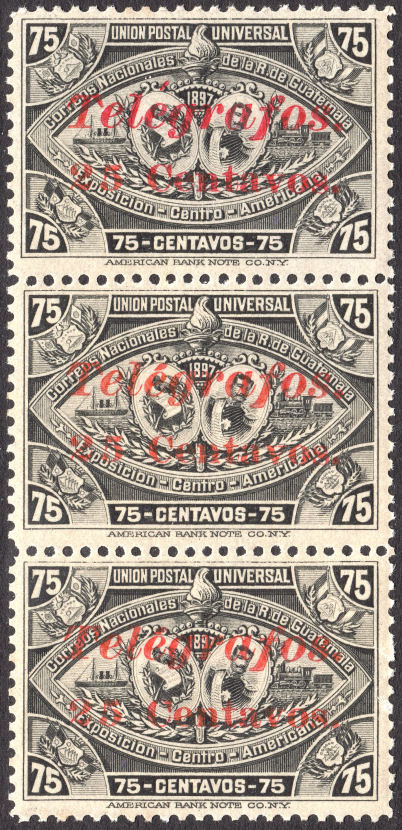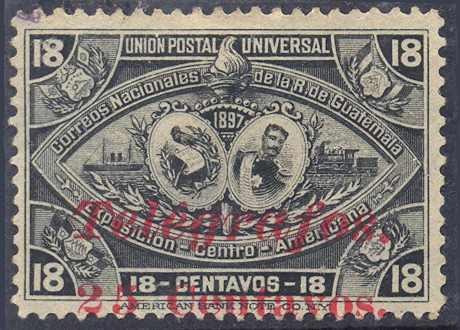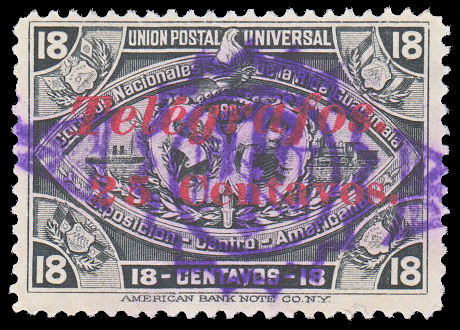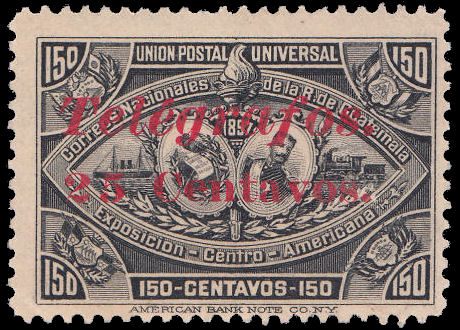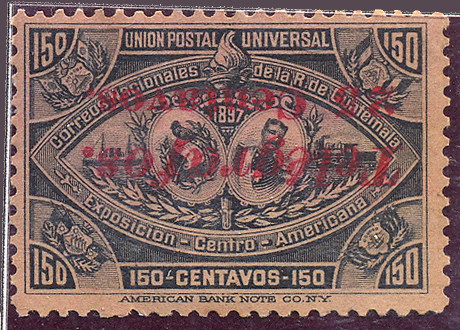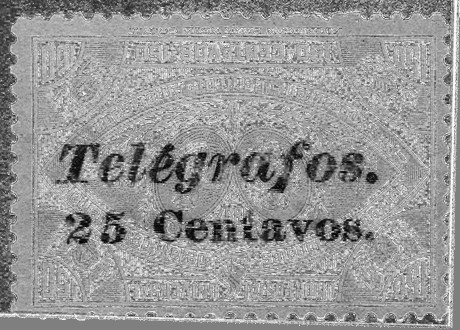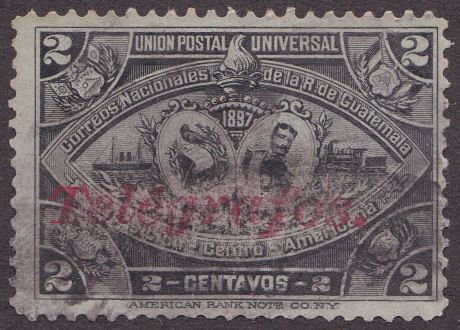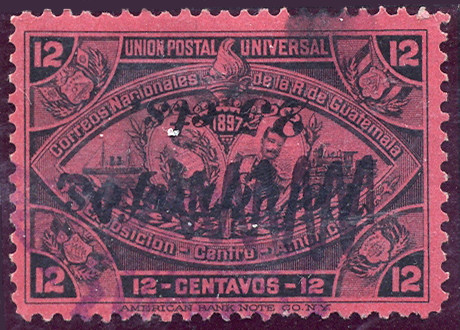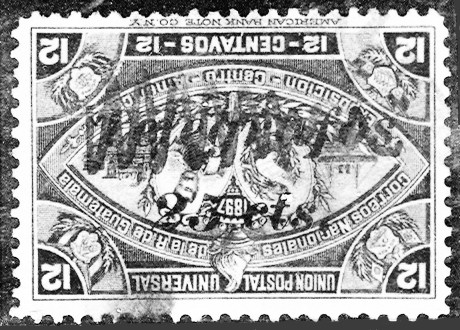| Up a level | ||||||||||
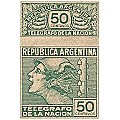 |
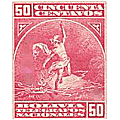 |
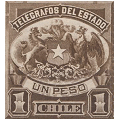 |
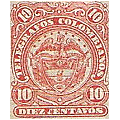 |
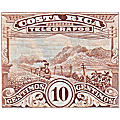 |
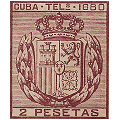 |
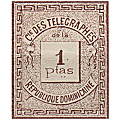 |
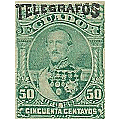 |
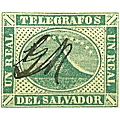 |
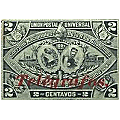 |
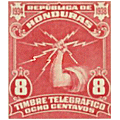 |
| Argentina | Bolivia | Chile | Colombia | Costa Rica | Cuba | Dominican Rep. | Ecuador | El Salvador | Guatemala | Honduras |
| Up a level | ||||||||||
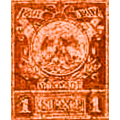 |
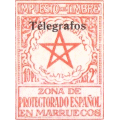 |
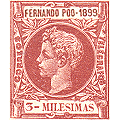 |
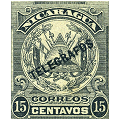 |
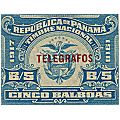 |
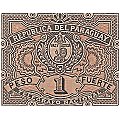 |
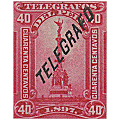 |
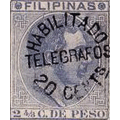 |
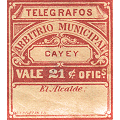 |
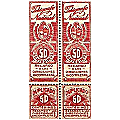 |
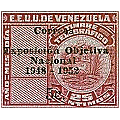 |
| Mexico | Morocco | Guinea | Nicaragua | Panama | Paraguay | Peru | Philippines | Puerto Rico | Uruguay | Venezuela |
Contributors: |
I have brought these prices up to date and added currency selection. The International Society of Guatemala Collectors (ISGC) published in 1993 a 24 page booklet entitled 'Guatemalan Telegraph Stamps & Stationery'. This contains valuable additional information that I have incorporated. ISBN 1-880721-01-5 - (may be available from here). CheckList Setup |
Guatemala.
Steve Hiscocks wrote:
Only three issues of telegraph stamps are known for Guatemala. The first and by far the most extensive was produced in 1898 by overprinting the
postage stamps commemorating the Central American Exhibition of 1897 (SG63–73) with the word 'Telegrafos' in two different types — one in black
and one in red. Those in black lack an acute accent over the second 'e' (with one exception) and a stop while those in red, although of the same general
type, have both and also show varieties in the sheet not shown in the black overprints. Numbers of stamps overprinted in red are known and given
below but the proportions of varieties in the sheet are not known. Since mint blocks are not too uncommon in the lower values, complete sheets,
from which this information might be obtained, may well exist.
A single value telegraph issue was produced in 1919 and a further issue was prepared at some unknown later date but not immediately issued. In 1938
three of these were surcharged and issued and it has been suggested that other values may exist. These stamps are not known without surcharge.
My note:
H13a is actually the Type 3 (red) overprint applied in black. It can therefore exist with the two varieties associated with the red
overprints.
These proportions are now known, 70% normal, 24% 'splayed T' and 6% splayed and raised accent.
The change in currency in 1925 is probably why the last issue were all surcharged.
Fake overprints are also known. Details below.
A US Wireless-Telegraph station list for 1906 showed nothing for Guatemala.
The similar list for
1910 showed a commercial station at Porto Barrios on the Caribbean coast.
This was probably operated by the United Fruit Company. To move fruit and coffee to the coast, a railway
was planned between Porto Barrios and Iztapa on the Pacific coast. By 1896 it was opened between Porto Barrios and Guatemala City.
The economy crashed in early 1897 due to a drop in coffee and silver prices.
This prevented completion of the railway. It is likely that the railway was accompanied by a telegraph line.
1898 Postage stamps of 1897 (SG63-73) overprinted and in some cases surcharged in black or red (Types 2 and 3 respectively).
Postage stamps printed by the American Bank Note Co. N.Y. in black on thick wove paper,
surface coloured in highly variable shades. Sheets of 10 x 10. No watermark. Perf. 12
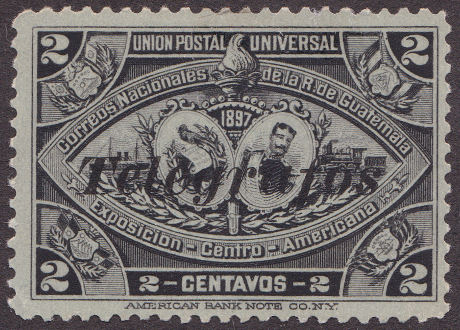 |
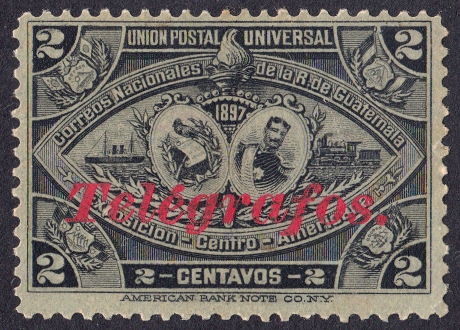 |
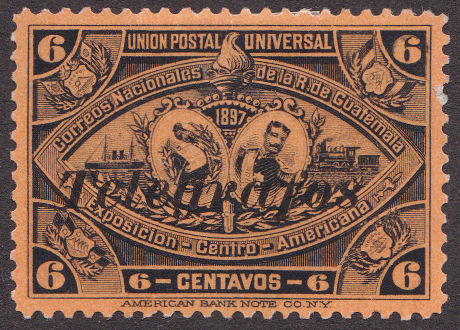 |
| H1 | H2c | H3 |
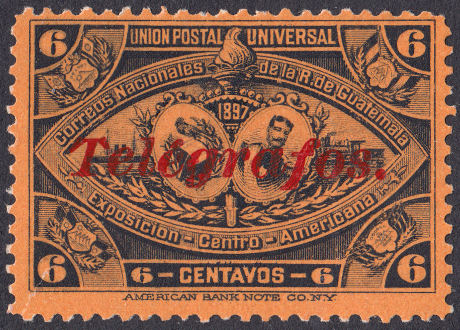 |
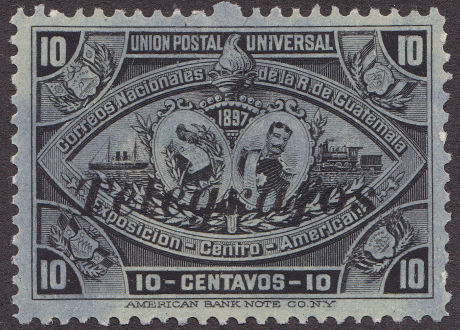 |
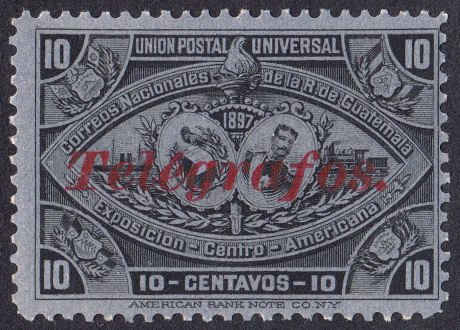 |
| H4a | H5 | H6 |
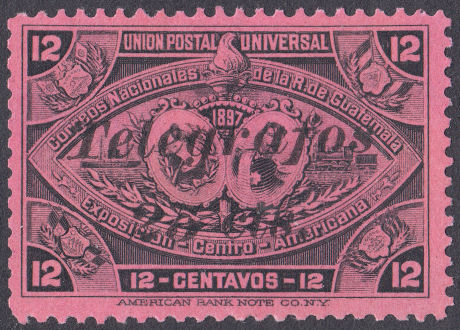 |
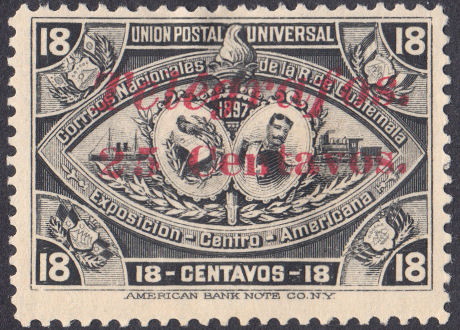 |
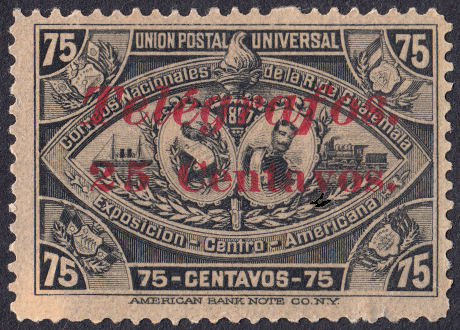 |
| H7 | H8 | H9 |
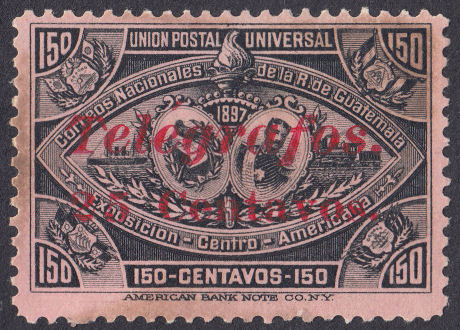 |
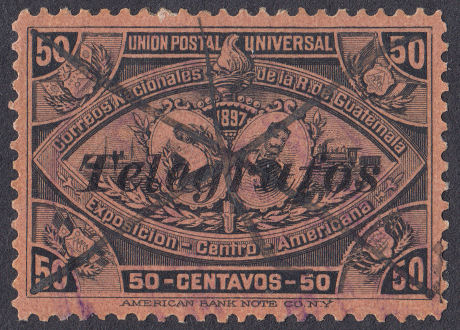 |
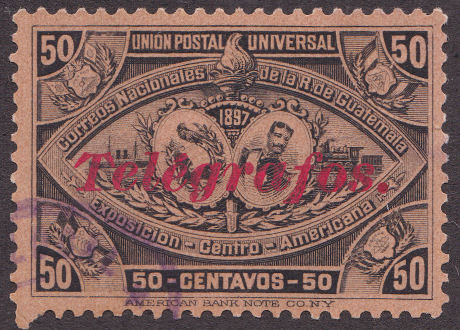 |
| H10b | H11 | H12a |
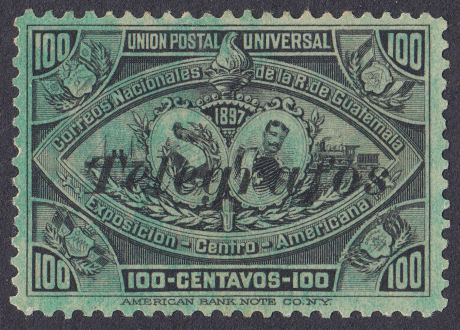 |
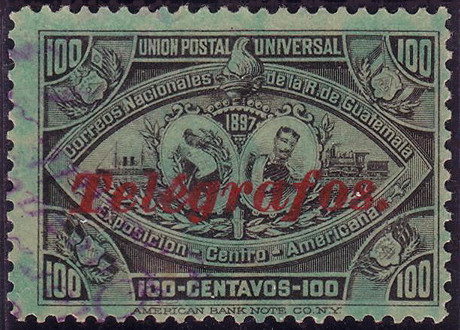 |
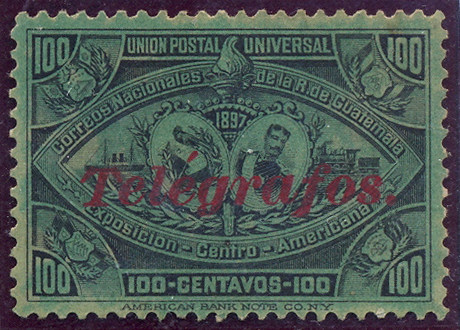 |
| H13 | H14 - from RL | H14b - from RL |
The first issue is all about overprints. Here are the types.
  |
  |
| Black overprints - Type 2. | Red overprints - Type 3. |
The distance between '25' and 'cts.' on the black overprint is variable. this may have some bearing on type H7b.
 |
 |
| 'T' top serifs slanted out on type 3a. | 'T' top serifs slanted out and raised accent on 'é' (type 3b). |
For Type 3, each sheet of a 100 contained 70 normal, 24 of type 3a and 6 of type 3b.
|
Hiscocks added the following 5 notes:
|
My notes:
| Note 1. The ISGC indicate that forged overprints are known, these have been used to fake inverted overprints and bogus stamps when applied to values that were not normally overprinted. The type reported is type 2, seemingly with the value separate to allow inversion. it is known in black, red and other colours, as well as on values that were not normally overprinted. The cross-bar of the 'T' is very thick. Buyer beware. |
| Note 2. H13a is actually the Type 3 (red) overprint applied in black. It can therefore exist with the two varieties associated with the red overprints. |
| Note 3. The 18c, 75c and 150c are catalogued much more highly as postage stamps without the overprint. Some examples of H8, H9 and H10 have subsequently had the overprint removed (or partially removed) a result. My thanks to docnik for bringing this to my attention. |
| Note 4. An example of H10 with white(ish) paper instead of 'salmon', without gum, is shown below. Possibly an attempt to remove the overprint using bleach. |
The sheet of a hundred consisted of two panes of 50 with the same pattern of RED overprint types.
Of the 100 stamps, there are
70 examples of A (the normal Type 3),
24 examples of B (Type 3a),
and 6 examples of C (Type 3b).
Multiples can have various combinations. Multiples that span the two panes are unusually scarce, suggesting that the panes were usually separated.
Used multiples are very scarce, large mint multiples are quite scarce. Complete sheets are known only for the 25c on 18c, 25c on 150c and the 50c.
1919 New design. Recess engraved by Waterlow & Sons (London) on white wove paper. Sheets of 10 x 10. No watermark. Perf. 14
The "Timbre de Reconstruccion" on the stamp, reflects the fact that this was for a tax on telegrams and cablegrams to help pay for
the reconstruction of the main Post Office in Guatemala City damaged by earthquake in 1917.
A similar tax on mail used a similar 12½c carmine stamp in a horizontal format. In 1920 and 1921 the 25c was overprinted for normal postal use.
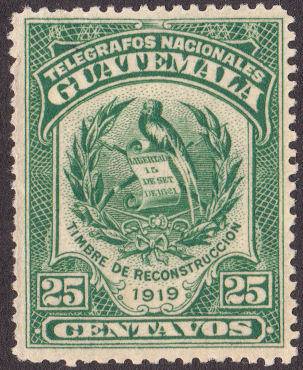 |
| Hiscocks Type 6 |
| Hisc. | Type. | Description | Mint | Used |
|---|---|---|---|---|
| H15 | 6 | 25c green | 7.50 | 10.00 |
Waterlow needed samples of their work to show potential customers.
In 1969 Robson Lowe sold a number of such sample stamps including miniature sheets of 9 as shown below:
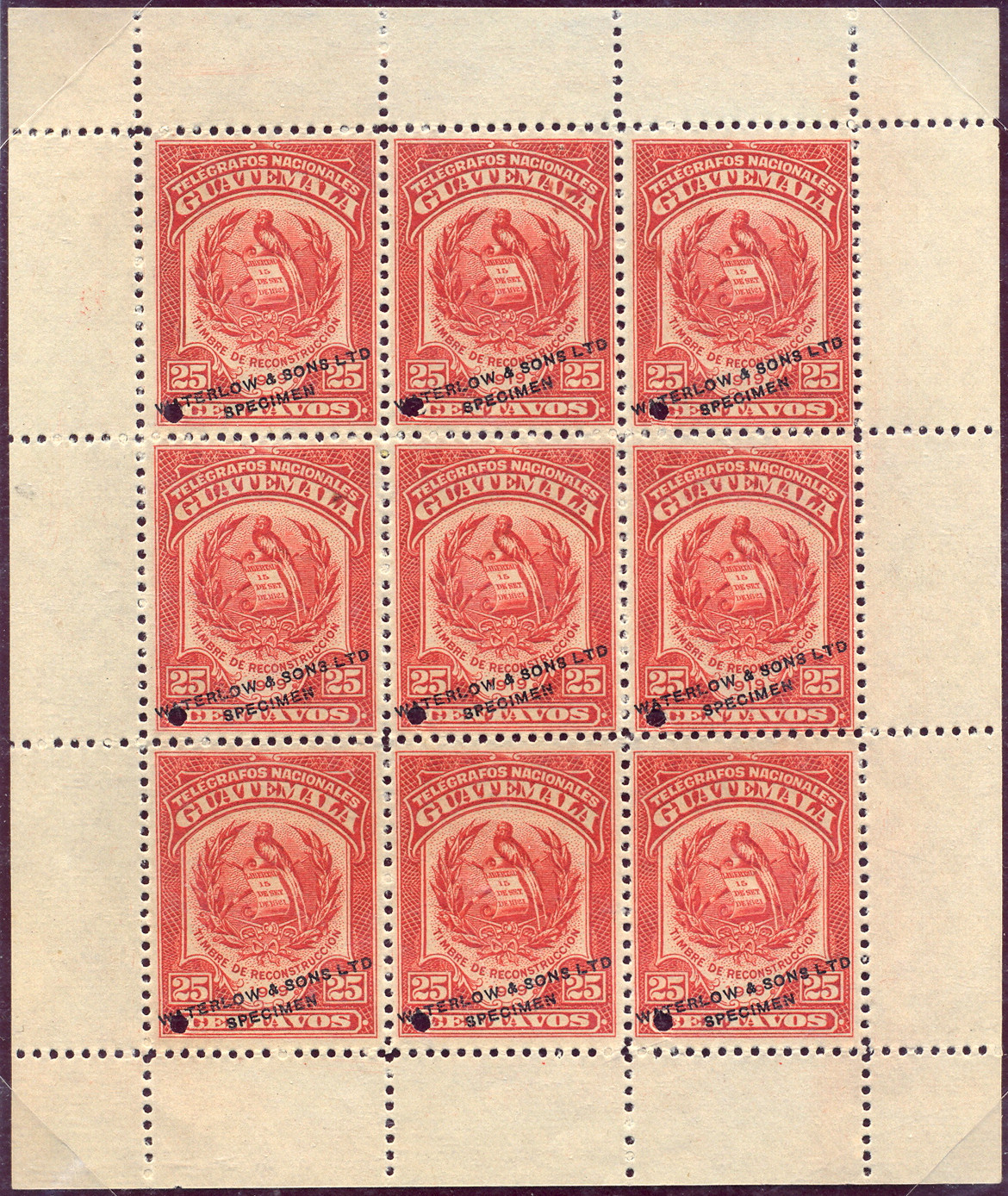
These are perforated 12.4 and have a 2mm hole at the bottom-left. There are also imperforate examples on paper or card without the hole.
Image from RL.
1930? Unissued telegraph stamps of 1924, printed by Waterlow & Sons (London) on white wove paper.
and subsequently surcharged in new currency as indicated in black. Sheets of 10 x 10. No watermark. Perf. 12.4
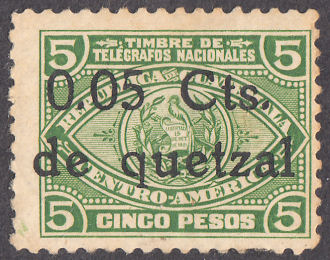 |
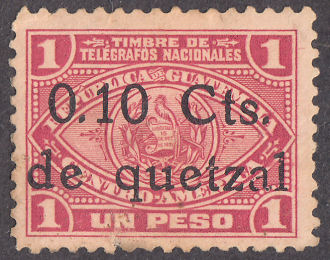 |
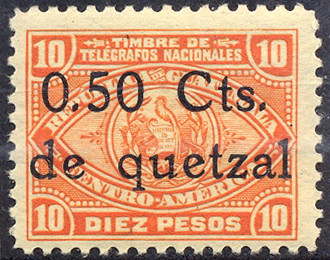 |
| Hiscocks Type 7 , H16 and H17. | Hiscocks Type 7 , H18 - from RL. | |
| Hisc. | Type. | Description | Mint | Used |
|---|---|---|---|---|
| H16 | 7 | 5c on 5p green | 10.00 | 20.00 |
| H17 | 7 | 10c on 1p carmine | 10.00 | 50.00 |
| H18 | 7 | 50c on 10p orange | 50.00 | 60.00 |
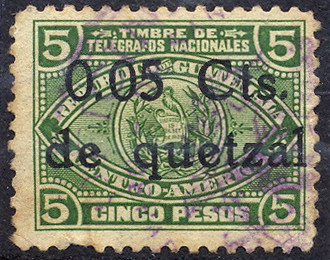 |
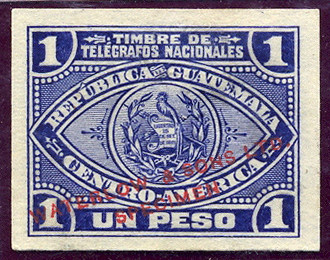 |
| Hiscocks Type 7 , H16 used. The date of this issue is uncertain due to lack of documentation and legibly dated used examples. |
In 1922 the National Treasury was direct to make funds available for 5 denominations of a new telegraph issue. They were not issued without overprint. |
| Images from RL. | |
| In addition to the specimens, there are also some die proofs known in black. This includes blank value, 1 Pesos, 5 Pesos and rather strangely, a 10 Pesos ! |
Stationery.
I have seen these with values of 2c, 6c, 10c and 12c.
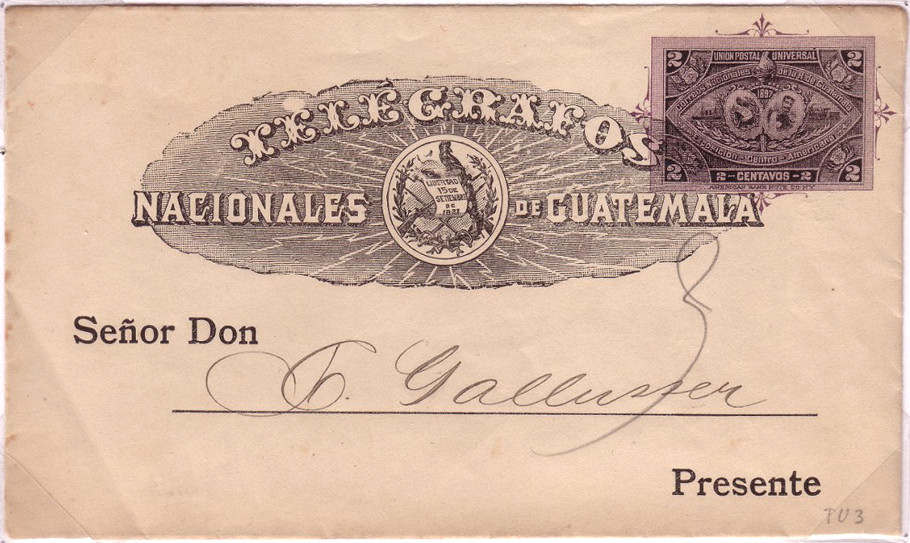
2c value from RL
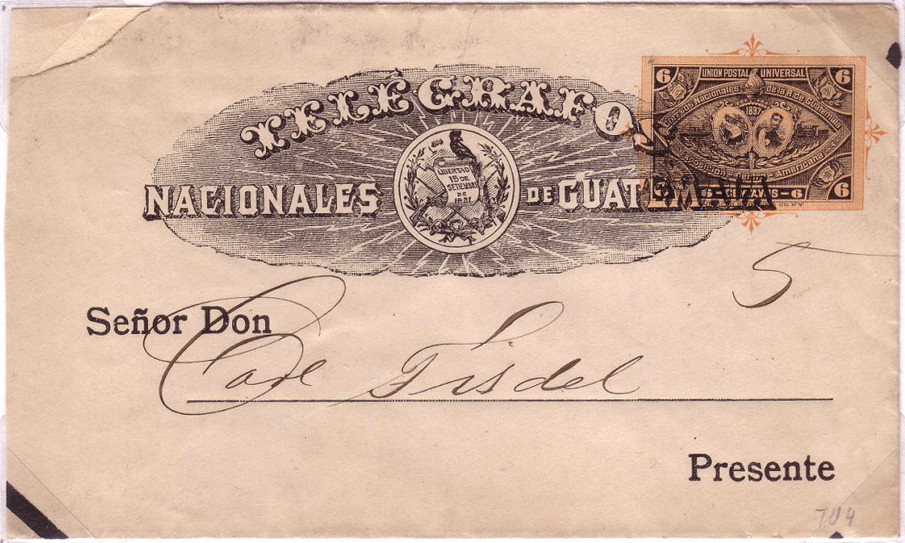
6c value from RL
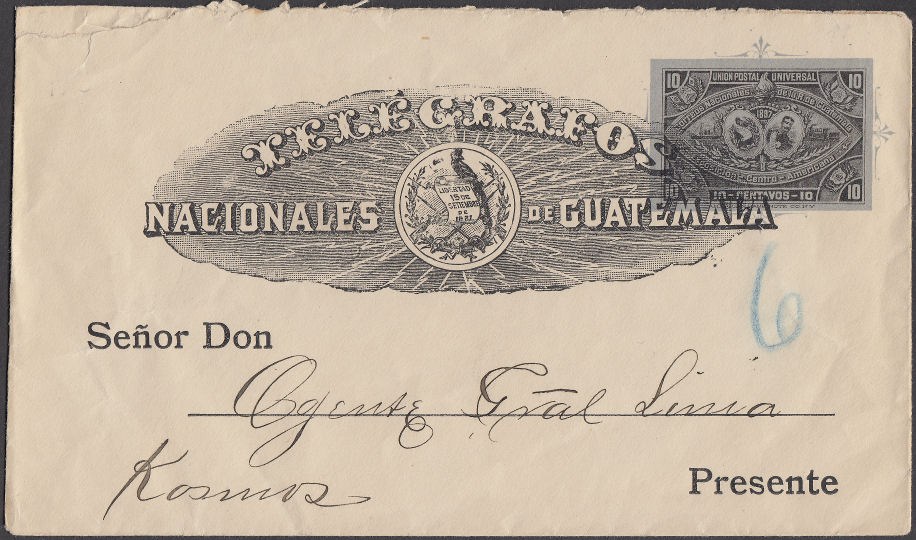
Half-size 10 Cent value.
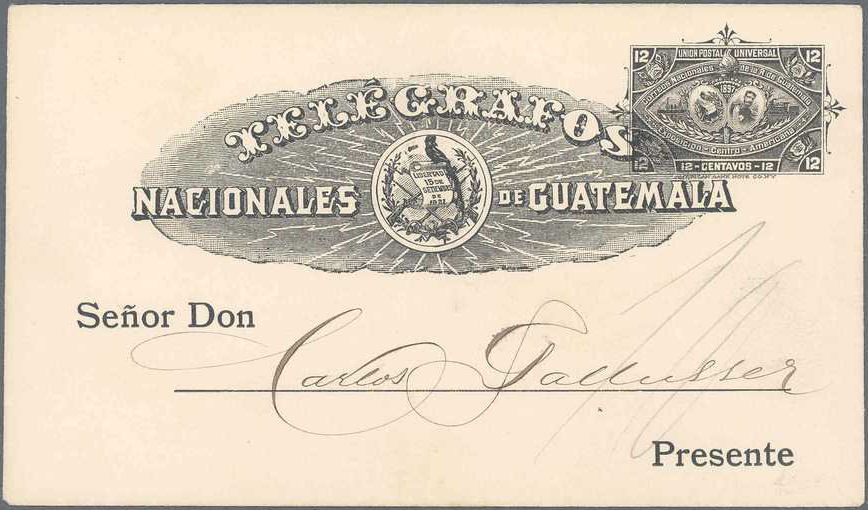
A similar 12c value, courtesy of Auktionshaus Christoph Gärtner.
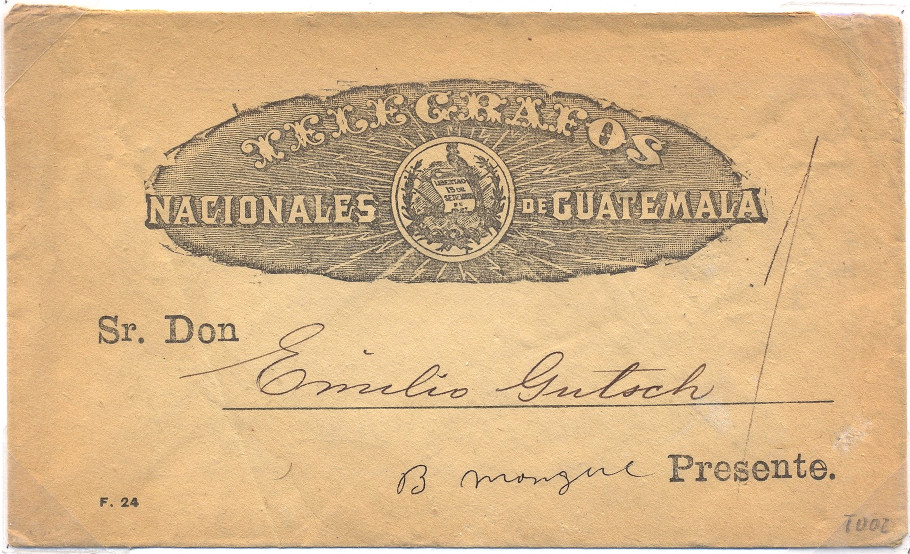
A similar one with no franking - from RL
